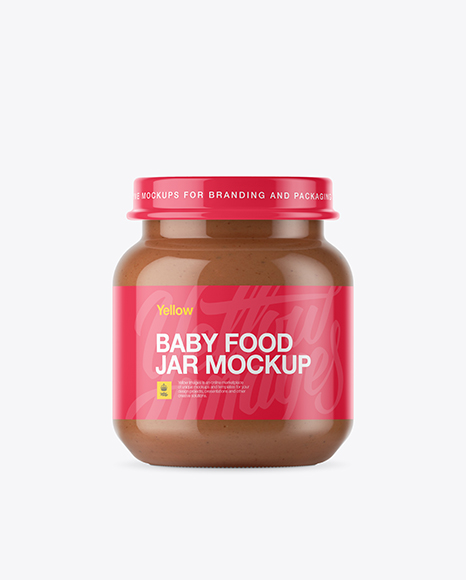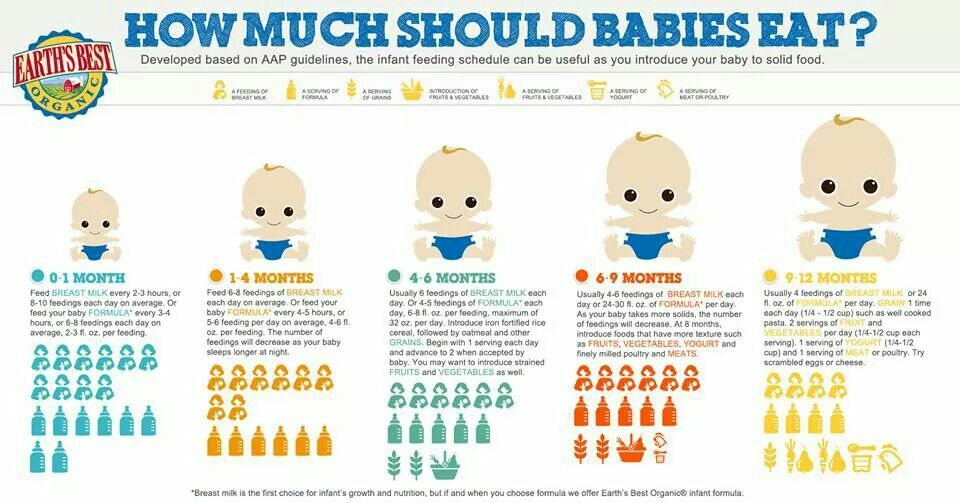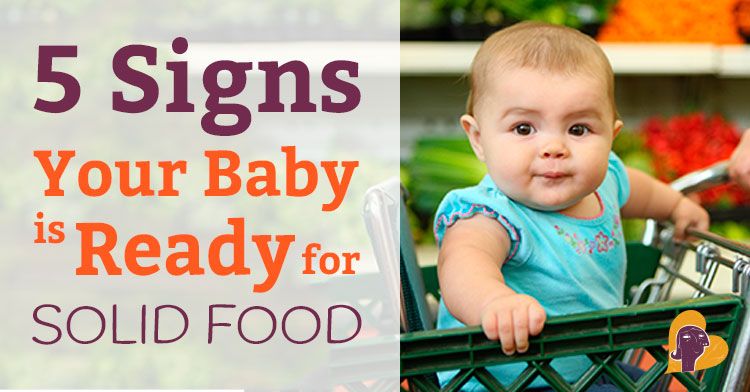Common baby food intolerances
Food allergy vs. food intolerance: What is the difference and can I prevent them?
What is an allergy?
An allergy happens when a person’s immune system treats a substance (allergen) like an inappropriate invader. The body will try to protect itself by releasing a chemical into the body called histamine. This chemical is what causes the symptoms that are unpleasant or even dangerous. The reaction can start very suddenly, even after being exposed to a small amount of the allergen.
Allergens can get into the body in different ways. They can be:
- inhaled (such as dust or pollen),
- ingested as food (some common ones are nuts, eggs or shellfish),
- ingested as medication (such as penicillin),
- injected by an insect sting (like a bee or wasp venom), or
- absorbed through the skin (such as poison ivy).
What foods are common allergens?
Any food can trigger an allergic reaction, but the most common are:
- peanuts
- tree nuts
- eggs
- shellfish
- fish
- milk
- soy
- wheat
Are there any foods I should avoid while breastfeeding to prevent my child from getting allergies?
You don’t need to avoid milk, egg, peanut or other foods while breastfeeding. There is no evidence that avoiding certain foods will prevent allergy in your child.
Is there a particular formula I should use to prevent allergies?
If breastfeeding is not an option or if you choose not to breastfeed, use a store-bought iron-fortified infant formula for the first 9 to 12 months. The formula should be cow’s milk-based. There is no evidence that soy-based or hydrolyzed formula will prevent your child from developing an allergy.
Should I wait to offer common food allergens to my baby for the first time?
- Don't delay. In infants at low risk for food allergy, common food allergens can also be introduced at around 6 months of age to try to prevent an allergy.
- For children considered at high risk of developing an allergy (e.g., they have a parent or sibling with an allergic condition, or they have other allergies, such as eczema), consider introducing common food allergens at around 6 months of age, but not before 4 months.
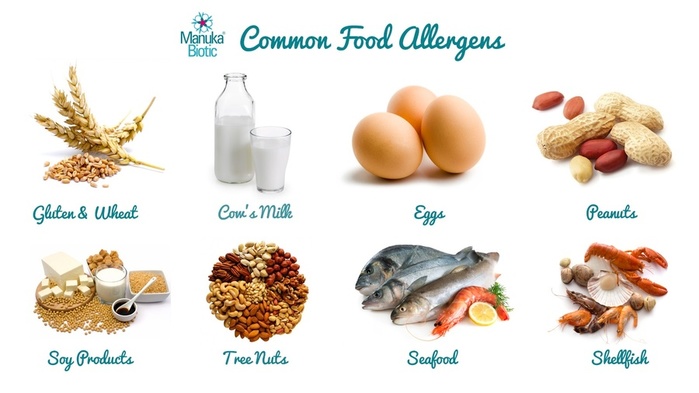
- When introducing foods that are common food allergens, try offering no more than 1 per day. Wait 2 days before you introduce another. This makes it easier to identify a food that may have caused a reaction.
- Once you offer these foods to your child, it’s important to continue to offer them on a regular basis.
- If you have concerns, speak to your health care provider.
How will I know if my child has a food allergy?
Most often, your child will have to eat a food more than once before you know they are allergic. For example, the first time your child is exposed to nuts, there will probably be no reaction. If they develop an allergy to nuts, the next exposure could be more serious.
What are the signs of an allergic reaction to food?
An allergic reaction can affect many different body parts. Symptoms can include:
- itchy mouth and throat when eating certain foods,
- hives (raised red, itchy bumps on the skin),
- stomach trouble (diarrhea, cramps, nausea, vomiting),
- swelling of the face or tongue, or
- trouble breathing.
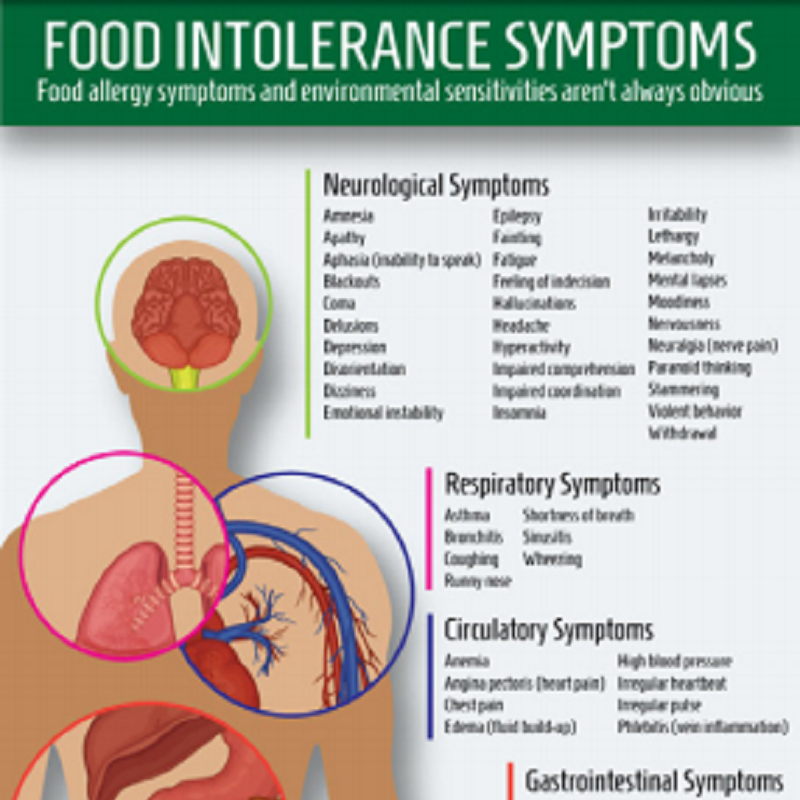
What is anaphylaxis?
Allergic reactions can be very serious, even life-threatening. In rare cases, a child may have a rapid and severe reaction to an allergen. This is called anaphylactic shock or anaphylaxis. It can happen within minutes or up to 2 hours after being exposed to an allergen.
What are the symptoms of anaphylaxis?
A severe allergic reaction can cause:
- difficulty breathing,
- swelling of the face, throat, lips, and tongue (in cases of food allergies),
- rapid drop in blood pressure,
- dizziness,
- unconsciousness,
- hives,
- tightness of the throat,
- hoarse voice,
- lightheadedness.
If any of these happen to your child, go the nearest emergency department or call 911 immediately.
Do children outgrow food allergies?
Many children outgrow food allergies, especially if the allergy started before age 3. Allergies to milk, for example, will usually go away.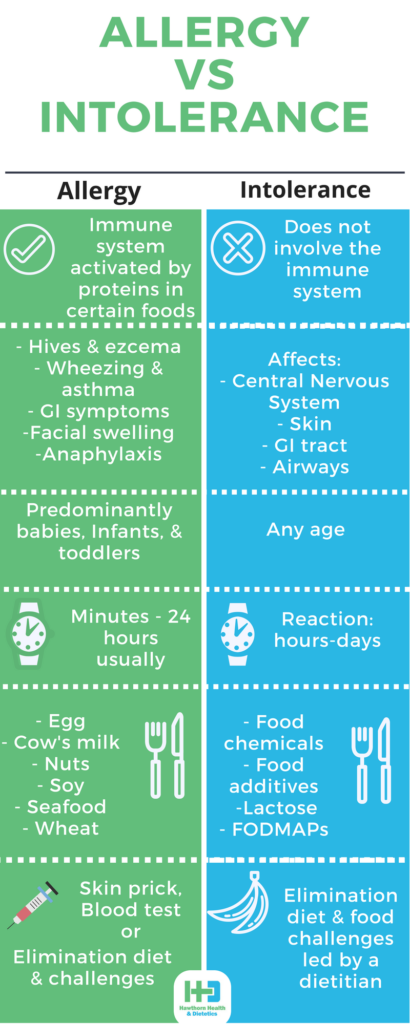 However, some allergies, like those to nuts and fish, probably won’t go away.
However, some allergies, like those to nuts and fish, probably won’t go away.
What is food intolerance?
Food intolerance is different from an allergy. It is not caused by an immune reaction. Food intolerance will cause discomfort, but it’s not dangerous to your child.
How can I tell if my child has food intolerance?
Your child may experience bloating, loose stools, gas or other symptoms after eating a specific food. Even though this reaction is not dangerous, if it causes your child discomfort you might want to avoid those foods in the future.
What is lactose intolerance?
Lactose intolerance happens when the body doesn’t produce enough of the enzyme lactase to fully break down the sugar (lactose) found in most dairy products. It is rare in young children and usually only develops after 3 years of age. While some young children adjust to the lack of this enzyme, some will have problems for life.
If your child is lactose intolerant, you can give them the calcium they need by offering lactose-free or lactose-reduced milk.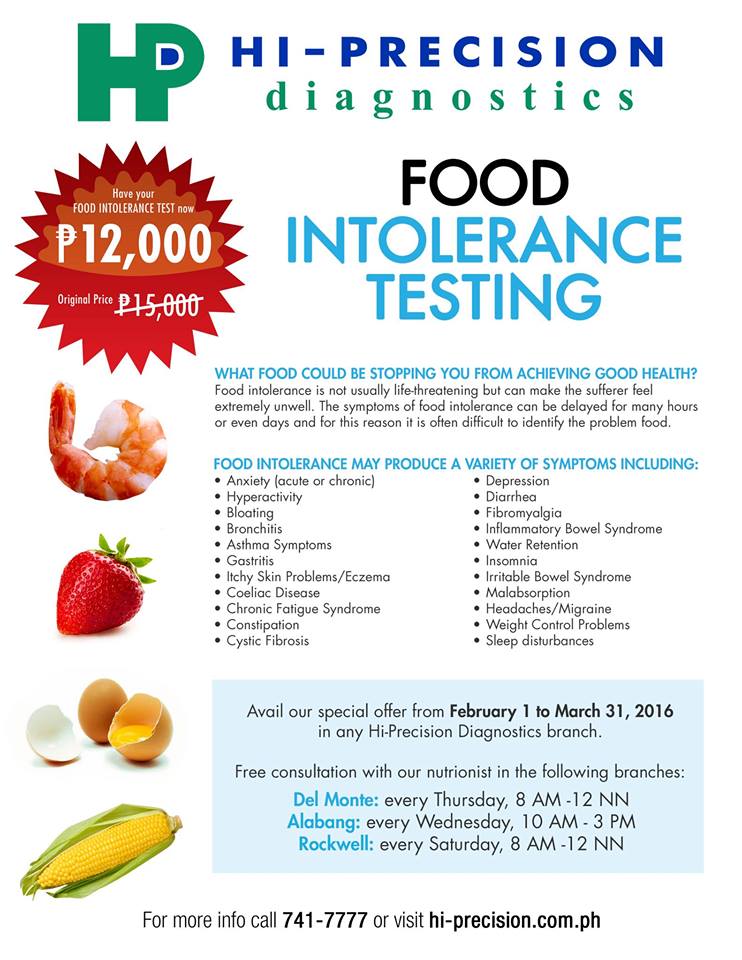
While none of these items will provide enough calcium on their own, it’s also healthy to offer:
- fortified soy milk,
- yogurt,
- canned salmon and sardines with edible bones,
- oranges or fortified orange juice,
- broccoli,
- almonds, and
- pinto beans.
Many of these foods do not provide enough vitamin D. Talk to your doctor about whether a supplement of vitamin D would be right for your child.
When should I call the doctor?
It is hard to diagnose food allergies. If your child has a reaction to a food, you will need to see your doctor. Your doctor will refer you to an allergist for the right testing.
If a serious allergy is confirmed, your doctor may prescribe a medication (e.g. EpiPen or Allerject), a needle that will protect your child right away if they are exposed to the allergen.
More information from the CPS
Additional resources
Reviewed by the following CPS committees
- Allergy Section
- Community Paediatrics Committee
- Nutrition and Gastroenterology Committee
Last updated: March 2021
Food Allergies and Food Intolerances | Baby
Learn the difference between food allergies and food intolerances in babies, and what to do about them.

4-minutes read
At a glance
Food allergies and food intolerances in babies are reactions to certain foods
Food allergies in babies can be sudden and potentially severe. It’s the immune system reacting to a food that it has mistaken as harmful
A food intolerance doesn’t involve the immune system and tends to come on more slowly
Most babies usually outgrow food allergies by early childhood as their immune systems develop
Food allergies and food intolerances are one of the biggest worries a parent has when weaning. A food allergy is your baby’s immune system reacting to specific foods. While some allergies can be mild, others are more serious and symptoms can affect various parts of the body at once. Food intolerances are usually less serious and are often linked just to the digestive system.
Up to 8% of children under the age of three have a food allergy. If there’s a family history of a food allergy or other allergic conditions, such as asthma, hay fever or eczema in your family, then baby is more likely to have one too. Interestingly, the link between food allergies and eczema is the strongest.
If there’s a family history of a food allergy or other allergic conditions, such as asthma, hay fever or eczema in your family, then baby is more likely to have one too. Interestingly, the link between food allergies and eczema is the strongest.
The more you know about allergies the easier it will be to diagnose and prevent them. You can take a closer look at our guide to general allergies in babies.
Most common food allergy causes
When you’re weaning, try giving baby new foods one by one so you can easily identify the food that may have caused an allergic reaction. The most common food allergies in babies and young children are milk, eggs, peanuts, and tree nuts such as hazelnuts, walnuts and almonds. The statistics are:
- milk: between 1.6% and 7% of babies
- eggs: about 2% of children under three years
- peanuts: up to 2% of children
Other common foods allergens:
- Cereals containing gluten
- Soya
- Fish
- Crustaceans (Shellfish)
- Celery
- Mustard
- Sesame seeds
- Molluscs
- Lupin beans
- Sulphur dioxide and sulphites (food additives)
How to spot the signs of allergies in babies
If you notice any of these symptoms after baby has eaten something, it could mean they’re having an allergic reaction.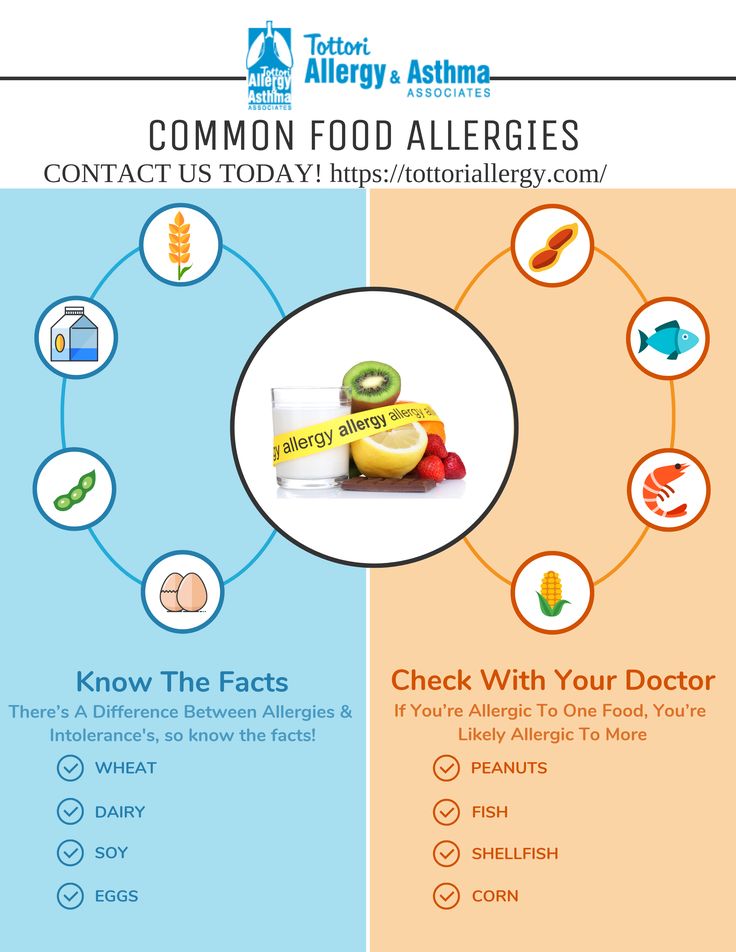
- Diarrhoea or vomiting
- A persistent cough
- Wheezing and shortness of breath
- Red or inflamed throat and tongue
- Itchy, flushed skin or rash
- Swollen lips and throat
- Runny or blocked nose
- Sore, red and itchy eyes
See our handy guide to understanding allergies.
What to do if you see these baby food allergy symptoms
- Contact a healthcare professional as soon as you think something's wrong.
- Once the diagnosis of a food allergy or food intolerance is confirmed, discuss how to manage your baby's diet to make sure they still get all the nutrients they need for healthy growth and development.
- Many babies outgrow their food allergies and food intolerances in early childhood.
- Visit Allergy UK for find more tips on dealing with food allergies.
What if baby’s food allergy symptoms are severe?
More severe symptoms like wheezing, breathing difficulties, throat and tongue swelling, and a sudden drop in blood pressure is known as anaphylaxis, or anaphylactic shock, and can be life-threatening, you can learn what to do in an emergency like this from the British Red Cross.
Thankfully, severe reactions are rare. However, if you suspect your child is having a severe allergic reaction, use an adrenaline auto-injector pen if you have been prescribed one, and call an ambulance immediately. Don't try to make your child vomit.
What is a food intolerance?
Unlike an allergy, a food intolerance is a reaction that does not involve the immune system. Intolerances tend to be less serious than allergies and can often take hours to reveal symptoms which are mainly limited to the digestive system. Although the symptoms can be unpleasant and uncomfortable they are not life-threatening.
The most common food intolerance in babies is lactose intolerance which means their body has difficulties digesting the sugar in milk (lactose). Symptoms include: bloating, wind and diarrhoea, which usually appear 1-3 hours after the food containing lactose has been eaten. If you’re breastfeeding, your baby might need lactase drops to help them digest the lactose in your breast milk. However, removing lactose from your own diet won’t make any difference as it is produced by your breasts and isn’t related to what you eat or drink.
However, removing lactose from your own diet won’t make any difference as it is produced by your breasts and isn’t related to what you eat or drink.
In general, symptoms of food intolerance tend to come on more slowly than allergic reactions, often many hours after eating, making them harder to diagnose. They include:
- Stomach cramps
- Bloating
- Diarrhoea
If you’re concerned that your baby has a food intolerance, speak to your GP, health visitor or public health nurse who will help to diagnose and manage it. They may ask you to try and eliminate certain foods and may also refer you and baby to a paediatric dietician for more specialist care and advice.
If you don’t think it’s anything serious but want to see what the common causes are, try our feeding issues symptom checker.
IMPORTANT NOTICE: We believe that breastfeeding is the ideal nutritional start for babies and we fully support the World Health Organization’s recommendation of exclusive breastfeeding for the first six months of life followed by the introduction of adequate nutritious complementary foods along with continued breastfeeding up to two years of age. We also recognise that breastfeeding is not always an option for parents. We recommend that you speak to your healthcare professional about how to feed your baby and seek advice on when to introduce complementary feeding. If you choose not to breastfeed, please remember that such a decision can be difficult to reverse and has social and financial implications. Introducing partial bottle-feeding will reduce the supply of breast milk. Infant formula should always be prepared, used and stored as instructed on the label in order to avoid risks to a baby’s health.
We also recognise that breastfeeding is not always an option for parents. We recommend that you speak to your healthcare professional about how to feed your baby and seek advice on when to introduce complementary feeding. If you choose not to breastfeed, please remember that such a decision can be difficult to reverse and has social and financial implications. Introducing partial bottle-feeding will reduce the supply of breast milk. Infant formula should always be prepared, used and stored as instructed on the label in order to avoid risks to a baby’s health.
Stage 3 weaning: Turning ‘no, no!’ into ‘nom, nom!’
prev Previous article
In Baby
Supporting baby’s gut health and immunity by Dr Childs
next Next article
In Baby
Food intolerance in children | Clinic La Salute
Interesting!
In 2010, the results of a study by Dr. Carina Venter from the University of Portsmouth were made public. Every fifth respondent stated that he had a food allergy. However, according to laboratory tests, it was found only in a tenth of the “allergy sufferers”. The rest had food intolerances.
Carina Venter from the University of Portsmouth were made public. Every fifth respondent stated that he had a food allergy. However, according to laboratory tests, it was found only in a tenth of the “allergy sufferers”. The rest had food intolerances.
Causes of food intolerance
Food intolerance in children is a broader concept than food allergy and can be caused by the following factors:
- heredity
- acquired diseases of the gastrointestinal tract
- psychological reactions to food
- entry of infectious agents and toxins into the child's body
Consequences of food intolerance
Food intolerance often leads to the development of diseases such as:
- Intestinal diseases
- Diseases of the kidneys
- Pathologies of the gallbladder
- Thyroid disorders
- Diabetes mellitus
- Migraine
- Skin problems (including eczema)
Important! One of the dangerous consequences of food intolerance is a malfunction in metabolism, which leads to disruption of the work of many organs and entails the development of chronic pathologies of a different nature.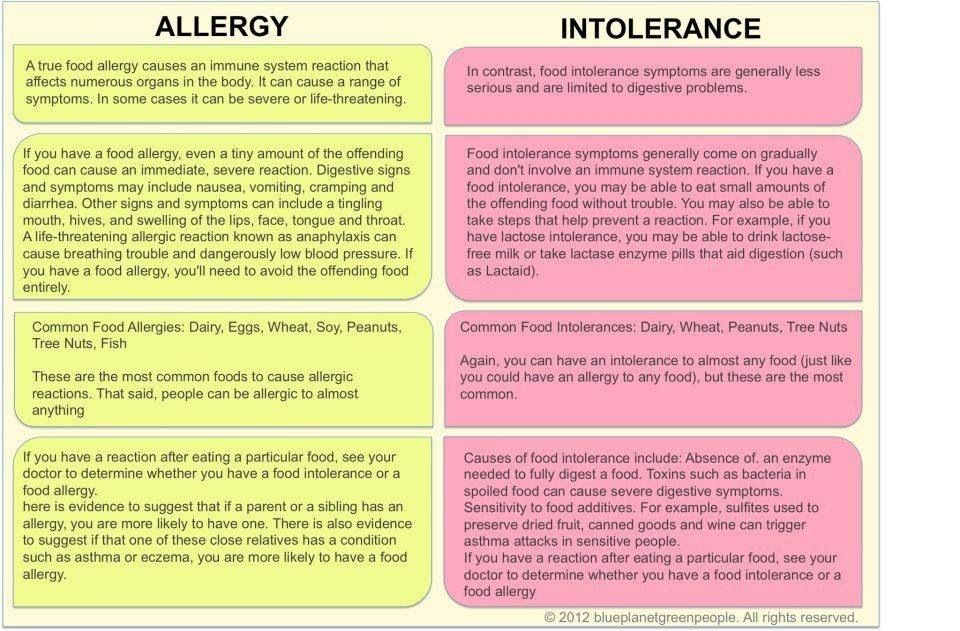
Common food intolerances in children
- Lactose intolerance
At an early age, it manifests itself when breastfeeding, but it can also appear in older children. - Gluten intolerance
It is characterized by the inability of the body to digest cereal protein and is fraught with a serious threat, since it can lead to a slowdown in the normal growth of the child. - Food intolerance
Manifested in non-allergic hypersensitivity in relation to any product or drink.
Symptoms of food intolerance
Food intolerance in children manifests itself in a variety of ways, and often does not have pronounced symptoms. A child may complain of feeling unwell, and it is extremely difficult for parents to associate his condition with a particular product.
However, there are a number of signs that may indicate a food intolerance:
- Runny nose
- Cough
- Overweight
- High blood pressure
- Chronic fatigue
- Migraine attacks
- Eruptions on the skin
- Bloating
- Diarrhea
- Dehydration
- Nausea
- Joint pain
Important! The main difference between food intolerance and food allergy is that intolerance may appear after some time, and not immediately.
Diagnosis and treatment of food intolerance
A food intolerance test can be done at the La Salute Clinic after consultation with your doctor to help diagnose a child's illness. This test allows you to determine the concentration of specific IgG antibodies to the proteins of more than 150 foods thanks to a highly sensitive enzyme immunoassay.
And the leading specialists of Moscow, who attend our clinic, will develop an individual and effective treatment and prevention plan for your child.
When should you see a specialist?
- Overweight with a balanced diet - excluding diseases of the endocrine system and hormonal changes.
- Inability to gain weight with sufficient food intake.
- Constant feeling of tiredness, lack of energy and desire to do anything.
- Stomach problems, skin reactions, swelling, muscle and joint pain.
Baby food and allergies in children: a reminder for parents
Allergology Proper nutrition More about children Healthy lifestyle Pregnancy and children
The global medical community is sounding the alarm, since about a third of children living in large cities today are prone to allergic reactions, and in 10 years, according to forecasts, allergies can cover almost the entire child population of megacities. In recent years in Moscow, according to some statistics, the annual increase in young patients suffering from its symptoms is about 7-8%.
In recent years in Moscow, according to some statistics, the annual increase in young patients suffering from its symptoms is about 7-8%.
The popular medical portal MedAboutMe will tell you how a food allergy manifests itself in children, how allergic reactions differ from food intolerance, and how to properly introduce unfamiliar foods into a child’s menu.
Manly beauty: how to choose body and hair care for “modern Vikings”?
Who is a “modern Viking” and why does he need “his own” cosmetics?Changes in diet and risk of allergic reactions
A well-known study by the European Society for Pediatric Gastroenterology, Hepatology and Nutrition (ESPGHAN) has shown that breast milk is the best nutritional option for a baby in the first six months of life. Complementary foods (i.e., any food other than breast milk or infant formula) should not be introduced until 17 weeks.
Most experts believe that the introduction of foods that are potential allergens into the baby's diet should begin after a year. For example, it is recommended to introduce only the yolk from 7 months, and postpone the acquaintance of the crumbs with egg white until 12 months.
For example, it is recommended to introduce only the yolk from 7 months, and postpone the acquaintance of the crumbs with egg white until 12 months.
Food allergy and the 4 day wait rule
Many baby food experts recommend following the 4 day wait rule when introducing solid foods to your baby's diet and introducing new foods. It lies in the fact that the child receives one product as complementary foods, starting with one teaspoon. Its amount in the diet gradually increases over 4 days. If during this time no undesirable reactions from the skin, mucous membranes, respiratory organs, digestive system were observed, another product can be introduced.
For example, they start complementary foods with squash puree. If within 4 days the baby, in whose menu zucchini appeared, does not have a food allergy to this vegetable, cauliflower is introduced and the reaction of the child's body is observed for another 4 days. Only after this time, if there were no manifestations of any pathological symptoms, the crumb menu can be diversified with a new product.
When a new food is introduced into a baby's diet over the course of several days, it is easier to determine exactly how the baby reacts to a particular food. It is especially important to adhere to the 4 day wait rule if there is a family history of allergies or food intolerances.
By following this rule and introducing new products one at a time, it is easier to avoid violent manifestations of allergies. If parents or other caregivers suspect that the child is having adverse reactions to a new diet, it may be possible to simply eliminate certain foods.
Tip
We recommend introducing new foods into your baby's diet in the morning or in the morning. If an allergy occurs, this will allow you to immediately get an appointment with a pediatrician who observes the child, so that the doctor clarifies the diagnosis, conducts an additional diagnostic examination if necessary, prescribes therapy and gives treatment and preventive recommendations.
Allergic reaction or food intolerance?
Important!
Remember that a food intolerance is not a food allergy and its symptoms are usually limited to intestinal problems.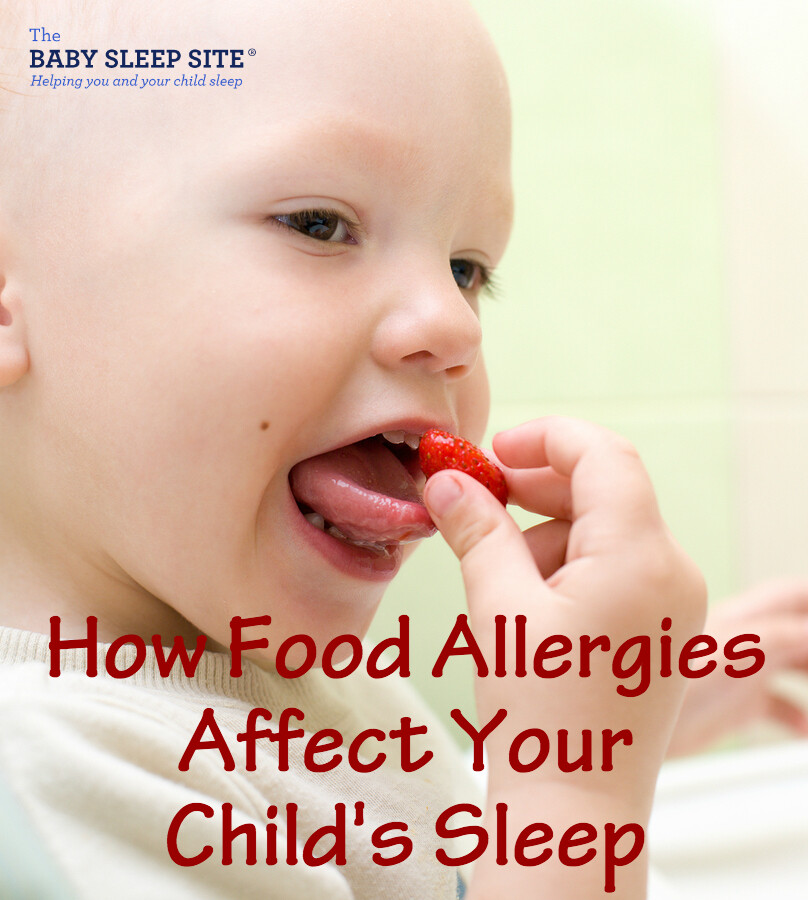
The body's immune system is involved in the development of food allergies.
Any allergic reaction occurs in response to some kind of danger. The body reacts by releasing antibodies called immunoglobulins E (IgE). These, in turn, cause the body to produce a chemical known as histamine.
When histamine is released, the body reacts with pathological symptoms:
- runny nose;
- pain in the eyes;
- skin rash;
- itching, etc.
In severe cases, anaphylaxis may develop.
Food intolerance does not imply participation in pathological reactions of the immune system. And it often happens that the food that caused a negative reaction of the body is easily tolerated by the human body at another time. Citrus fruits are a good example of this.
Citrus fruits can cause food intolerance in children due to the high acidity of the fruit. Often in children whose diet is introduced oranges under the age of 1 year, there is a rash around the mouth or in the lower part of the body, bloating, colic. An adult child can tolerate these products well, even if in infancy he had pathological reactions to citrus fruits from the gastrointestinal tract or rashes and other pathological symptoms on the skin.
An adult child can tolerate these products well, even if in infancy he had pathological reactions to citrus fruits from the gastrointestinal tract or rashes and other pathological symptoms on the skin.
Another food that often causes food intolerance is lactose. The body of people who suffer from lactose intolerance does not produce or produces insufficient amounts of a specific enzyme, lactase. It helps to digest milk sugar (lactose). In adulthood, according to official statistics, this violation is registered in almost 18% of Russian citizens. But according to some unofficial data, there are much more Russians suffering from food intolerance to milk sugar.
In some regions of Southeast Asia, the proportion of people with food intolerance to lactose among the adult population is up to 100%.
However, the gastrointestinal tract of many infants with lactose intolerance can easily digest fermented milk products (eg, yogurt, cheese), in which bacterial cultures have already processed milk sugar.



